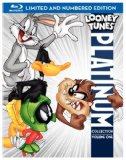| Reviews & Columns |
|
Reviews DVD TV on DVD Blu-ray 4K UHD International DVDs In Theaters Reviews by Studio Video Games Features Collector Series DVDs Easter Egg Database Interviews DVD Talk Radio Feature Articles Columns Anime Talk DVD Savant Horror DVDs The M.O.D. Squad Art House HD Talk Silent DVD
|
DVD Talk Forum |
|
|
| Resources |
|
DVD Price Search Customer Service #'s RCE Info Links |
|
Columns
|
|
|
Looney Tunes Platinum Collection: Volume One
Hilarious, beautiful and incredibly packed
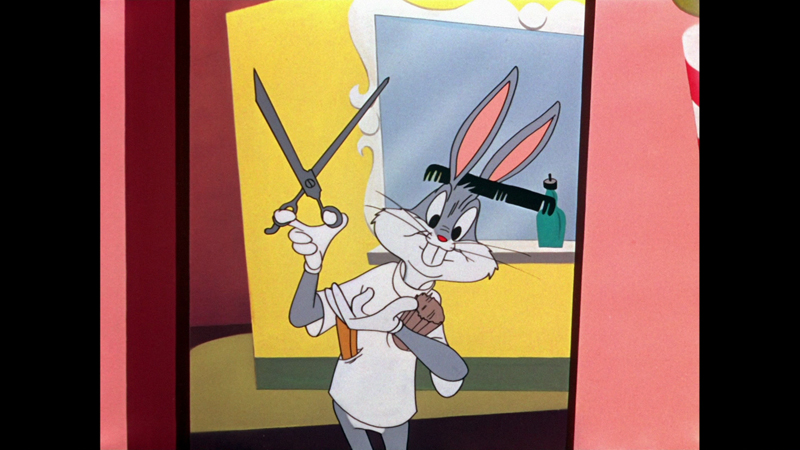
Reviewer's Bias*
Loves: Animation, quality packaging, excessive extras
Likes: Bugs Bunny, Ralph Phillips
Dislikes: Daffy Duck, Witch Hazel, Tweety
Hates: Double dips
The Story So Far...
Starting with theatrical shorts in 1930, the Looney Tunes series of cartoons has been going strong for decades, creating some of the most beloved cartoon stars of all time, including Bugs Bunny and Daffy Duck. Among the more than 1,000 cartoons created under the Looney Tunes banner are some of the most memorable shorts ever, including four listed on the National Film Registry, five Academy Award-winners and 26 Oscar nominees. There have been numerous DVD collections of the best-known shorts, including the acclaimed six-volume Golden Collection, and DVDTalk has reviews of many of these titles.
The Shorts
Popping in Disc One, I found myself watching Baseball Bugs, knowing what was coming up next, even though I hadn't seen the cartoon in perhaps 10 years or more, and yet still laughing at the smoothly choreographed antics. These shorts are just ingrained in me after a childhood spent watching classic cartoons that were old then, and are decades older now. Yet, my 5-year-old daughter walked in the room, sat down next to me and was soon laughing hysterically at these characters she knew only on a surface level from theme park visits and spin-offs. If a laugh can carry from the 1940s to the 2010s, entertaining a child in the 1980s, as well as an adult and child in 2011, the word timeless fits perfectly.
Part of why they still work is because they weren't made for kids, which I feel is the hallmark of all great kids entertainment. If the subject matter is appropriate for children, but the intended audience is adults and the quality is high, kids will raise their own personal bar to meet that quality (as Pixar has proven time and again.) Growing up, I watched a ton of old Disney cartoons (in the early days of the Disney Channel) and even more Looney Tunes shorts (which aired after school on what seemed like 10-15 channels), and though I certainly enjoyed the Disney material, it was the Looney Tunes that spoke to me. There was something attractively chaotic, yet expressly classy about these characters who acted like living, breathing people who happened to obey the laws of cartoon physics. They were funny, silly, beautifully and creative, but most of all they were entertaining in a truly satisfying manner.
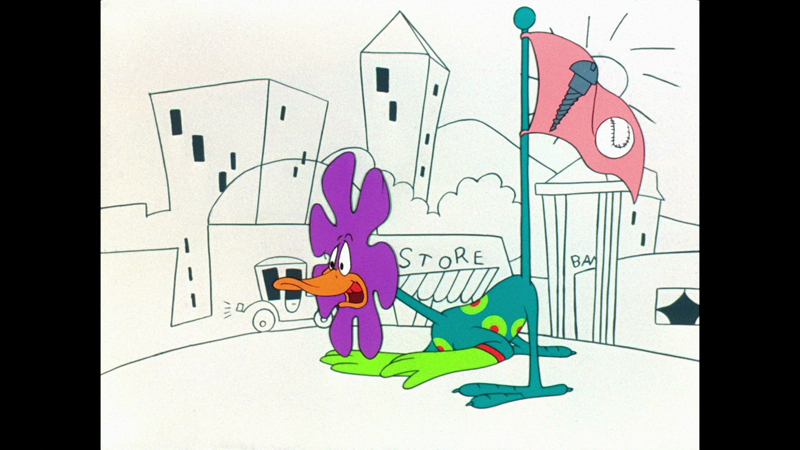
This collection, the first on Blu-Ray, follows the rather extensive Golden Collection releases (and the lesser Superstar discs), so there's not a lot of freshly-released cartoons, but there are a few, including Hare-way to the Stars, Bill of Hare, Lovelorn Leghorn, The Hasty Hare, Feline Frame-Up and A Witch's Tangled Hare. It's a testament to the extent of the Golden Collection's reach that these previously-absent entries don't jump out as essential shorts, though Hare-way to the Stars is one of the best designed Looney Tunes ever. In fact, the only reason most of these are probably included is to fill the set's complete-run concept (more on that later.)
Disc One is all about the stars of the series, namely Bugs and Daffy, while giving some notice to other long-running leads like Porky Pig, Tweety and Sylvester, Wile E. Coyote and the Road Runner, Pepe Le Pew and Speedy Gonzales. Naturally, Bugs gets the most screen-time, with eight shorts of his own leading the way, with classics like the aforementioned Baseball Bugs, Rabbit Hood, Rabbit of Seville and the wonderful What's Opera, Doc? These shorts are perfect examples of why Bugs made the impact he did, and why he remains so popular. Sarcastic, quick-witted and forthright, he made for the perfect leading man, but has an off-kilter sense of humor that creates an inability to predict what he would do next, be it utilize a gentle feminine persona (a tact used frequently in Looney Tunes) or just go all-out crazy violent and blow up his foe. His flexibility as a character makes him perfect for the more unusual concepts, like the operatic Rabbit of Seville or What's Opera, Doc?, where his shenanigans help carry the shorts through the musical elements, while playing the perfect foil to the Looney Tunes stable of "baddies" like Yosemite Sam or Elmer Fudd, as he defuses their short-fuse anger with his wise-ass comedy.
Daffy Duck combines that anger and comedy, but without the smoothness of Bugs' character, or the internal motivation to create comedy. He's at his best when he has someone to work off of, like his team-ups with Porky Pig (frequently in parodies like Robin Hood Daffy or his space-age hero Duck Dodgers) but even then he becomes the joke rather than instigating it. As a result, Daffy's the hero you don't cheer for, but rather root against, especially when he's faced with a higher level of competition, like in Duck Amuck, the most fantastically meta cartoon ever, as he faces off against an unseen animator who tortures him, raising his ire again and again. Directed by Chuck Jones, who elevated the art of animation with every move he made, it was a watershed moment, proving that animation could please crowds and push boundaries at the same time, and establishing Jones as one of the true leaders of the art form. That so many of these shorts bear his name, and then that so many of the shorts with his name are among the most memorable and/or best of the bunch bears witness to his impact, including his creations Wile E. Coyote and the Road Runner and Pepe Le Pew.
Disc Two has a different angle, focusing on one-off episodes and characters who made limited appearances, attempting to capture their entire cartoon careers. Though the one-shots aren't nearly as popular as the main cast's exploits (with the exception of One Froggy Evening, the Jones-directed classic tale of a singing frog who will sing for just one man) they represent the range of the studio's animators and give a fuller picture of American animation's history, represented by three classic directors in Jones, Friz Freleng and Tex Avery (though Avery's entry is hardly recognizable as an Avery film, as it's a very simple story about a jazz-singing owl ("Owl" Jolson) and his disapproving family.) Be it a jazz-scored retelling of the Three Little Pigs, a swing-dancing story about college cats or the experimental Ivy League parody in The Dover Boys at Pimento University, there's something to take from each of them in exploring the animated past.
Also found on Disc Two are five quite well-known characters who made limited appearances in Looney Tunes films: Marvin the Martian, the Tasmanian Devil, Witch Hazel, Marc Anthony and Ralph Phillips (who surprisingly appeared in just two films (at least as a child (see The Extras.) These memorable characters starred in just five films at most (Marvin and Taz), so it was decided to offer them as "Complete" runs, so they will live only in Volume One of this series (which is great news when it comes to Witch Hazel, a wholly unlikable character.) Unfortunately this isn't true for Marc Anthony, as two of his cartoons are missing after being included in the Golden Collection (though one is an acceptable omission, as in Go Fly a Kit though they look on model, their characters are completely opposite and are most likely not Marc Anthony and his kitten pal Pussyfoot.) However, what is here for that dog and Earth's most dangerous Martian opponent are some classic shorts that really define the characters perfectly in just a few short cartoons.
Though Bugs or Daffy is on hand for all of Taz's shorts, they just can't hold up the slack left from the Tasmanian Devil's limited personality. He may be a force of nature who springs some funny gags when he slows down, he's just difficult to enjoy in large doses. The same can't be said though about Ralph Phillips, the hero to every daydreamer and avatar for every kid who would have rather to have been playing pretend astronaut than be cooped up in a classroom. Perhaps it was the close identification he shared with Jones, but these are some of the most imaginative and stylish cartoons of the entire Looney Tunes run (challenged mainly by the Duck Dodgers films, Duck Amuck and Hare-way to the Stars. It says it all about this wide-eyed dreamer that his two simple adventures were so utterly unforgettable, capturing the imagination as easily as his own was by a nearby window.
As good as the shorts on this set are, watching them all grouped together illustrates some of the problems with the Looney Tunes series, namely the reliance on bits they know work. In this one set, which represents just a fraction of the overall run, there are several plots that are repeated, like two Robin Hood episodes, two opera episodes, and numerous stories about protecting a smaller creature from harm. Then, once you get down to the joke level, the gags repeat themselves with far more frequency, sometimes due to catchphrases and trademarks, but often they just feel like the writers and animators went back to a successful well yet again. Like with SNL, crutches aren't just for the infirmed.
One of the more disturbing aspects of the shorts, at least for anyone looking to share these cartoons with younger viewers, is the level of violence in them. Now, there's nothing wrong with some over-the-top slapstick, but the gunplay is actually off-putting, especially when it comes to the many occurrences of characters pulling out handguns, putting them to their temple and attempting suicide. I don't remember it happening quite so frequently when I was a kid, but now it stands out as creepy and definitely shocking (but then, the amount of cigarette smoking is rather surprising as well, which tells you how much the world has changed.)
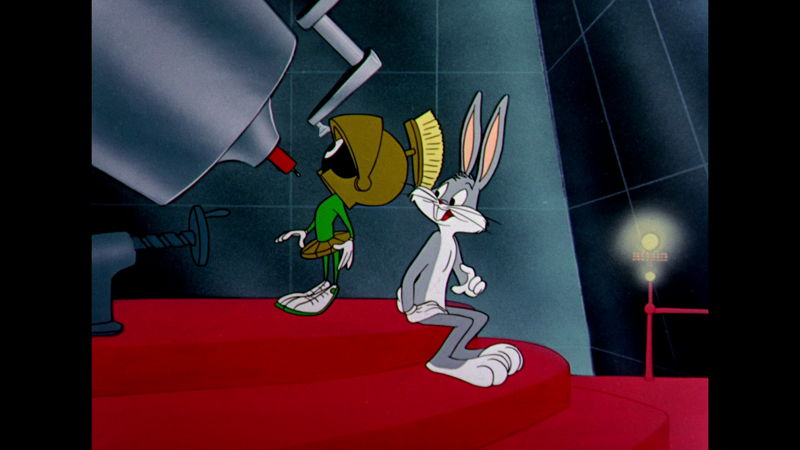
The Discs
For this limited edition, the three Blu-Ray discs are packed in a holo-foil-covered hardcover digipak book with two trays (discs two and three are overlapped (but not touching.) The shorts are presented in their original aspect ratio (so you've got black bars on all sides in some spots, and on the left and right on others. Audio options include Dolby Digital 1.0 English and Spanish tracks (on some shorts) while subtitles are available in English SDH and French.
- Hare Tonic
- Baseball Bugs
- Buccaneer Bunny
- The Old Grey Hare
- Rabbit Hood
- 8 Ball Bunny
- Rabbit of Seville
- What's Opera, Doc?
- The Great Piggy Bank Robbery
- The Scarley Pumpernickel
- Duck Amuck
- Robin Hood Daffy
- Baby Bottleneck
- Kitty Kornered
- Scardey Cat
- Porky Chops
- Old Glory
- A Tale of Two Kitties
- Tweetie Pie
- Fast and Furryous
- Beep, Beep
- Lovelorn Leghorn
- For Scent-imental Reasons
- Speedy Gonzales
- One Froggy Evening
- The Three Little Bops
- I Love to Singa
- Katnip Kollege
- The Dover Boys at Pimento University
- Chow Hound
- Haredevil Hare
- The Hasty Hare
- Duck Dodgers in the 24-1/2th Century
- Hare-Way to the Stars
- Mad as a Mars Hare
- Devil May Hare
- Bedevilled Rabbit
- Ducking the Devil
- Bill of Hare
- Dr. Devil and Mr. Hare
- Bewitched Bunny
- Broom-Stick Bunny
- A Witch's Tangled Hare
- A-Haunting We Will Go
- Feed the Kitty
- Kiss Me Kat
- Feline Frame-Up
- From A to Z-Z-Z-Z
- Boyhood Daze
The Quality
Watching some (note: some) of these cartoons (presented in 1080p AVC-encoded transfers) was incredibly eye-opening. There are cartoons in this collection that look better than stuff created and aired today. That said, it's not all excellent, as some shorts have distracting, excessive noise or grain in the solid areas of color, and there are many examples of dirt and damage in most of the shorts that hasn't been removed or cleaned up. That said, it's safe to pronounce that you've never seen these cartoons look this good, with their bright, beautiful color and tremendously sharp images (for the most part.) There are no issues with digital artifacts to be noticed either. The only issue with such a crystal clear, detailed presentation, and the way it highlights the hand-drawn artistry, is it can draw attention to the actual animation in spots, like when I became focused on a dot of white that must have been in the artwork and moved when Bugs Bunny moved. I actually got up and got close to the screen to examine it. But hey, that's probably my problem, not yours.
Though honest and faithful, the Dolby Digital Mono tracks on these may seem like a bit of a relic in such an high-end home-video package. There's nothing inherently problematic about the audio, as the dialogue is consistently clear and the incredibly varied music is free of any distortion (outside of some very minor recording noises that befit the material's age.) However, when you're looking at such incredibly lush animation and the sound doesn't have the same oomph, it feels a bit weak by comparison. That's rather unfortunate, since the music is such a huge part of these shorts' appeal. Again, they don't sound bad, but one wishes they sounded better.
The Extras
Can you really call this material "extras" when it makes up more of the set than the actual shorts? These discs are incredibly packed, and the extras get started before you even put a disc in, as they arrive in a 52-page hardcover Blu-Ray case-sized book, written by animation historian Jerry Beck. An introduction to Looney Tunes is followed by informative breakdowns of each disc, including insightful descriptions of each short and the extras. While the info he provides is great, it's the presentation that truly impresses, loaded with archival Looney Tunes art, including sketches, lobby cards and background art.
The disc-based extras start with a pile of 37 audio commentaries, featuring a host of filmmakers, writers, actors and historians, including notable names like Paul Dini, John Kricfalusi, Chuck Jones, Bob Clampett, Mel Blanc and Friz Freleng. The majority of these tracks are carried over from the Golden Collection releases, but there are seven new commentaries from Pocahontas director Eric Goldberg, including tracks for classics like Baseball Bugs, Rabbit of Seville and Boyhood Daze. These fit in well with the rest of the bunch, offering plenty of tidbits and inside info for animation fans, and thankfully there's a track for five of the six rare one-off shorts, as they are far less known and the background is helpful for newcomers.
There are also 15 music or music-and-effects track, which allow you to really appreciate the quality of the scores and audio-effects work, as well as a pair of vocal-only tracks (Blanc and Arthur Q. Bryan on What's Opera, Doc? and Stan Freberg on The Three Little Bops.) Of these, there are four new music tracks, which happen to be for four of the cartoons in the "Complete" sections.
Disc One presents seven expert-powered featurettes previously available on the Golden Collection DVDs (and delivered in standard definition here.) Music, a key element of the Looney Tunes universe, gets its time in the spotlight with "Wagnerian Wabbit: The Making of What's Opera, Doc?" (9:31) and "Twilight in Tunes: The Music of Raymond Scott" (6:44). There's more appreciation of Scott's work in the montage "'Powerhouse' in Pictures" (2:08) which shows the use of his driving horn-heavy theme that's now synonymous with cartoonish action. "Putty Problems and Canary Rows" (5:33) spends a bit of time on the cat and bird pairing of Tweety and Sylvester (including the origin of their look and sound), while "The Charm of the Stink: On the Scent of Pepe Le Pew" (7:33) does the same for Jones' infamous skunk, lending the character more respect than he probably has ever received. The most extensive of these featurettes, check in at 13:23, is "A Chuck Jones Tutorial: Tricks of the Cartoon Trade," which explains eight key techniques and concepts that define Jones' style. Like much of the material in this set that includes Jones' thoughts on animation, it's so academic and insightful that you can't help but leave a bit smarter about the art form. If only Pixar existed when Jones was at his peak. Together, they would have been incredible.
Disc Two offers a trio of new featurettes focusing on the three most popular characters to get the "Complete" treatment. "Mars Attacks! Life on the Red Planet with My Favorite Martian" (14:45) joins a group of animation insiders as they talk about the history and development of Bugs Bunny's most threatening enemy, as well as the animation challenges (and opportunities) he brought and his iconic voice. The Tasmanian Devil then gets an expert analysis in "Razzma-Taz: Giving the Tasmanian Devil His Due," (12:05) which offers a different group of commentators, and some really interesting background info, including how his popularity was almost cut off before it began. Finally, "The Ralph Phillips Story: Living the American Daydream" (6:55) focuses on the little kid with the big imagination, including info on the man behind the voice and Jones' relationship with the character, provided by a trio of animation experts who explain why Ralph is so tied into the world of the animator.
Also on Disc Two are a pair of hold-over featurettes from the Golden Collection, presented in standard definition. "Wacky Warner One-Shots" (9:14) led by Beck, looks at the cartoons (most of which are not included in this set) that didn't feature the big Looney Tunes regulars. These are oddball experiments that let the animators try new things and spread their wings, staving off the routine of doing another Porky Pig story, and they are something to behold. Beck returns, with Jones and several other experts, to expand on one of these one-shots in "It Hopped One Night: The Story Behind One Froggy Evening" (7:09) discussing the music, the animation and how the famous frog got his name.
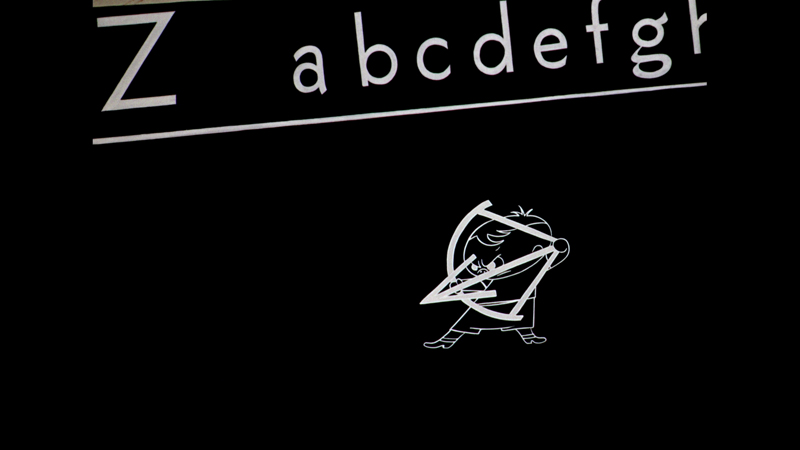
Disc Three is all extras, focused mainly on Chuck Jones, starting with an introduction from the man himself, showing off his erudite perspective on animation, before heading into Chuck Amuck: The Movie (51:10) an extended interview with the director extraordinaire. Just watching the master at the drawing board, as he shows how to draw his famous characters (plus a famous non-Looney Tunes mouse) is like sitting and listening to your fantastically interesting and amazingly introspective grandfather spin one of his old yarns (and analyze his creations with the insight of a University professor.) Getting to hear from Blanc, Mike Maltese and a few others on top of all this is just gravy.
There's more Jones to be enjoyed in the 85-minute Chuck Jones: Extremes and In-Betweens, A Life in Animation, but this time he's got help in telling his story from all-star testimonials provided by Ken Burns, Ron Howard, Steven Spielberg, Lorne Michaels, Whoopi Goldberg, Robin Williams, Matt Groening, John Lasseter, Leonard Maltin, Roger Eber, Joe Dante, Rob Minkoff and Andre Previn. As entertaining as it was to hear directly from Jones, this is a true overview of his career (going beyond his WB work to things like The Dot and the Line and The Grinch Who Stole Christmas) and with all these voices (especially Lasseter's enlightened idolatry), it's undeniably engaging.
Chuck Jones: Memories of Childhood (26:16) is a bit close to overkill following the two more complete entries that precede it, and is highly similar is tone to Chuck Amuck, as Jones sits and talks about his early days, in one of his last filmed interviews. The interview is mixed with photos and animation based on his drawings, and reveals a lot about his development, but a lot of it's been covered on this same disc, just not as artistically.
The remainder of the content is mainly rarities, starting with pencil tests from Jones' work on the Grinch animation film (6:51), which offer a rare look at the work that went into developing the art. There's also a collection of nine shorts from Jones, titled "The Animated World of Chuck Jones", which includes a handful of war-time government work and some book adaptations (like The Dot and the Line) as well as a live-action film with monkeys. The government work (two of which feature an adult Ralph Phillips) is fascinating, as is most propaganda/informational material from that time, and the adaptations are just fantastic. As for Orange Blossoms for Violet, which stars monkeys, ducks and dogs? Well, it's fun for its rarity, and the opportunity to hear Looney Tunes voices come out of monkeys.
- Point Rationing of Foods
- Hell-Bent for Election
- So Much for So Little
- Orange Blossoms for Violet
- A Hitch in Time
- 90 Day Wondering
- Drafty, Isn't It?
- The Dot and the Line: A Romance in Lower Mathematics
- The Bear That Wasn't
The classics wrap up with 1967's The Door (6:43) which was co-produced by Bill Cosby and features jazz music by Clark "Mumbled" Terry. It's a trippy bit of indie animation, seemingly an anti-war statement, but it would be just as easy to assign any number of meanings to the images of war and gluttonous Native Americans.
After you're done with the older material, there's a slate of bonus cartoons from the modern era of Looney Tunes, nine in all. It's a mix of rarities, like a 3D film (presented in 2D) for an Australian theme park starring a CG-enhanced Marvin the Martian, a selection of more recent Jones cartoons and unreleased shorts like "Museum Scream" with Tweety and Sylvester. Though they have the spark of creativity from earlier films, as well as Jones' touch on several of them, they are missing that special something that made the classics truly classic (though Marvin the Martian in the Third Dimension and Museum Scream come the closest.
- Fright Before Christmas
- Spaced-Out Bunny
- Duck Dodgers and the Return of the 24 1/2th Century
- Another Froggy Evening
- Marvin the Martian in the Third Dimension
- Superior Duck
- From Hare to Eternity
- Father of the Bird
- Museum Scream
If you get nothing else out of these extras, at least you'll know that Eddie Selzer was apparently the Michael Scott of his time.
Of course, in this limited edition of the set (individually numbered out of 36,000 pieces), there are some non-Blu-Ray extras, which arrive in a large, beautiful, holofoil-covered case with a magnet-sealed cover, alongside the book and discs (as well as a ribbon to help you retrieve the collectibles.) Inside the box, there's an an envelope holding a tin sign of Bugs Bunny and Daffy Duck and a litho cel. The sign has magnets on the back for hanging on your fridge, but for some reason the magnets in this set have come off before the box was even open. The sign is solid and attractive, but some embossing would have made it better. The cel, titled "The Looney Tunes March," shows Tweety, Porky, Daffy, Sylvester, Elmer and Bugs in costumes from the cartoons on the Warner lot, and comes in a sealed cardstock frame with an embossed certificate of authenticity from Warner Brothers and Clampett Studio. It's nice to look at, but not very big, at maybe 5 1/2" wide by just under 4" high (frame included.)
The final extra is a substantial squarish shot glass, that's about 2" high and an inch and a half in width and depth, and features a picture of Bugs Bunny on the front and his name on the back. The walls are rather thick, which gives it some heft, so at least it's a quality glass, though who knows how long the illustration would last if you used it. A quick look around the 'Net doesn't reveal a similar glass available, so it looks to be a real collectible for Bugs Bunny fans. Check out the video below to get a look at the goods.
The Bottom Line
If you've never picked up a Looney Tunes collection on DVD before and care at all about these characters or just simply animation as an art form, you owe it to yourself to pick this set up. It's simply too beautiful, too filled with brilliance and too loaded with bonus content to not have, especially if you have kids, as the cartoons bridge generations with laughs that everyone can enjoy. But what if you own any or all of the Golden Collection? Well, there are six non-"Golden" cartoons and a handful of rarities and extras that weren't included in those sets, so there's certainly new material, but the real reason to buy a ticket to this show is the picture quality, so if that matters to you, you need this set. Do you need it with the limited-edition bonuses? That's between you and your god, because though they are neat, the three collectibles and the box might not be worth 20 dollars to everyone. The discs are worth every dollar though.
Francis Rizzo III is a native Long Islander, where he works in academia. In his spare time, he enjoys watching hockey, writing and spending time with his wife, daughter and puppy.Follow him on Twitter
*The Reviewer's Bias section is an attempt to help readers use the review to its best effect. By knowing where the reviewer's biases lie on the film's subject matter, one can read the review with the right mindset.
|
| Popular Reviews |
| Sponsored Links |
|
|
| Sponsored Links |
|
|
| Release List | Reviews | Shop | Newsletter | Forum | DVD Giveaways | Blu-Ray | Advertise |
|
Copyright 2024 DVDTalk.com All Rights Reserved. Legal Info, Privacy Policy, Terms of Use,
Manage Preferences,
Your Privacy Choices | |||||||









